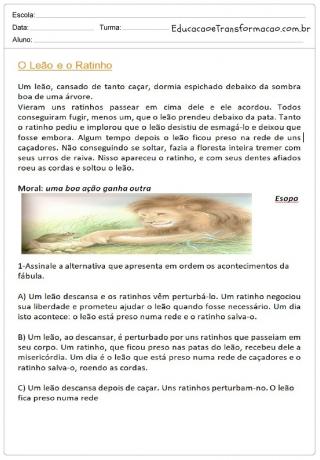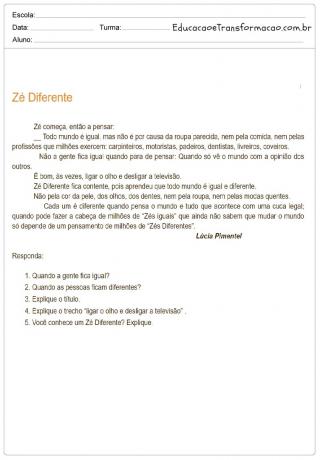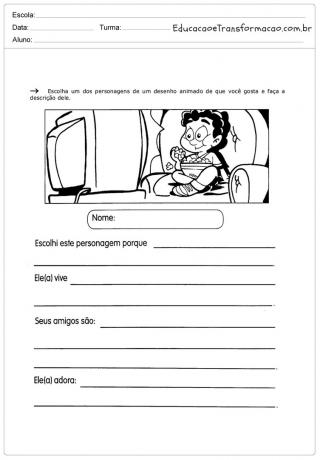
In this publication we selected the best 4 year interpreting activities, from elementary school to ready-to-print and apply to students.
All activities available here are free and already formatted with excellent quality.
In the first years of school, one of the most practiced subjects is text interpretation. Check out other suggestions:
These 4th year Text Interpreting exercises can be worked from elementary school grades, to so that students become familiar with it and not have so many problems related to language in life adult.
Index
Through the interpretation of a text, or even a conversation, the young person becomes able to understand and understand his limits and naturally improve, inside or outside work. Another advantage is being able to express an opinion and articulate ideas and, in this way, take a stand on a topic.

Answer:




Choose one of the characters from a cartoon you like and describe it.


Read the following joke and solve the questions (A, B, C and D).
Also check:
1) The text you read is a comic version of a well-known fairy tale. What is the name of this tale?
2) read
3) Read and answer:


Reread this excerpt to answer questions 6 and 7.
I opened my mouth to scream, terrified, but the voice wouldn't come out, and when it did
it was the same as my sister's annoying voice, which suddenly entered my
dream and said:
— WAKE UP, LET'S PLAY!
The highlighted sentences, in bold, in the excerpt above represent the speech
A) of the narrator.
B) by Andréia.
C) of one of the animals.
D) of the children's mother
Subscribe to our email list and receive interesting information and updates in your email inbox
Thanks for signing up.

